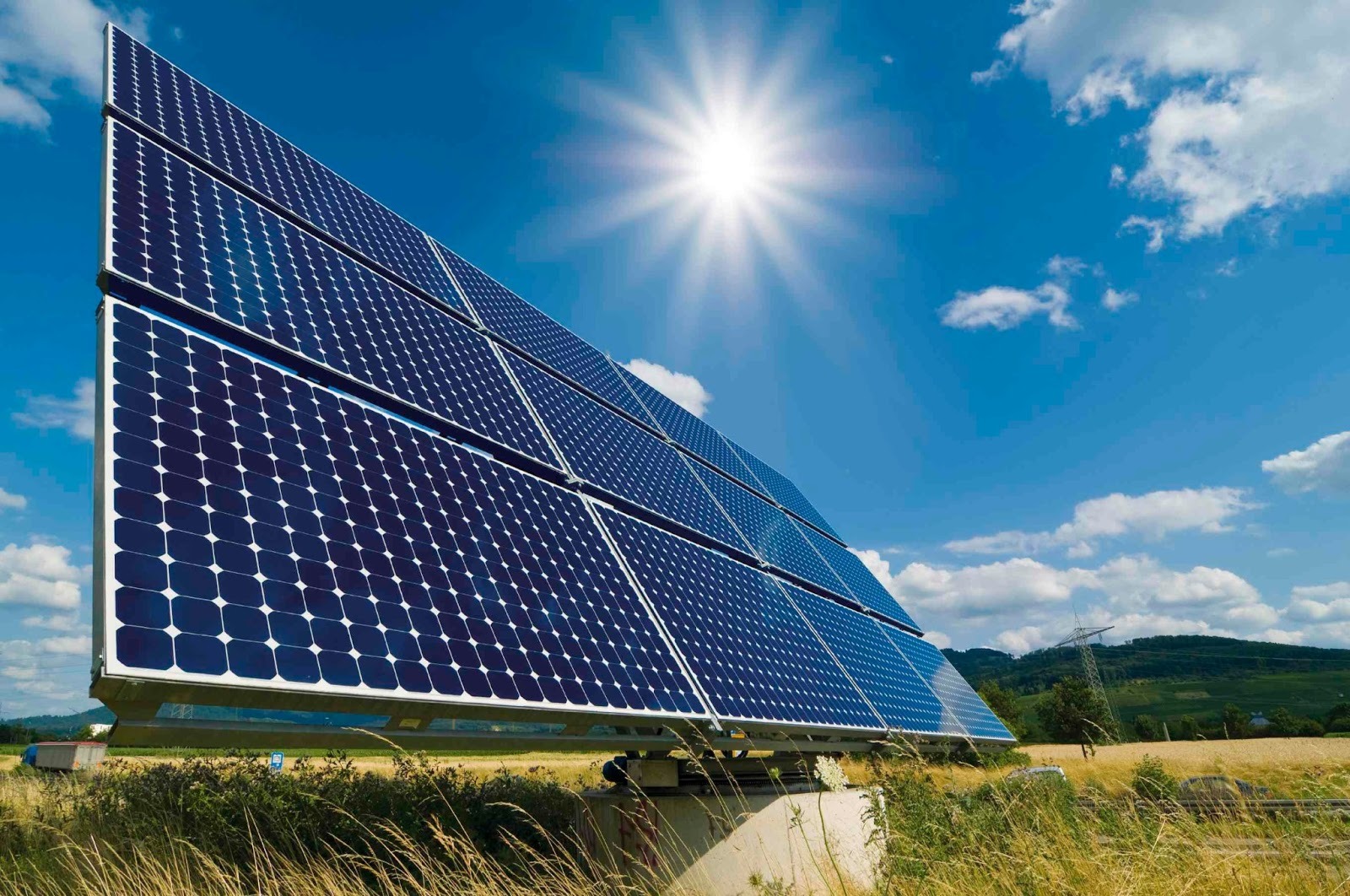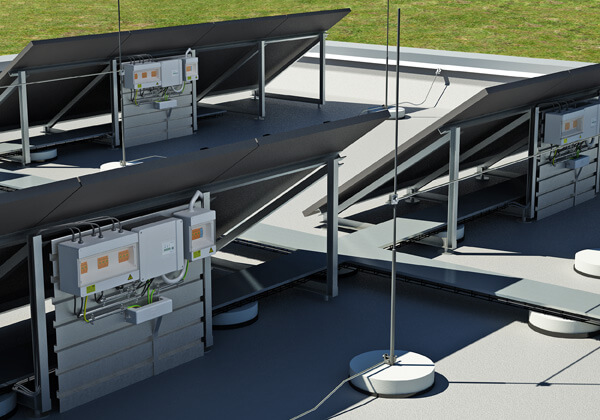Are you tired of constantly rising electricity bills and looking for a way to reduce your carbon footprint? Stand-alone solar power could be the solution you’ve been searching for. By harnessing the sun’s power, stand alone solar power provide a sustainable and cost-effective way to generate electricity for your home or business. In this blog post, we will explore the ins and outs of stand-alone solar power, including how it works, the benefits of going solar, installation tips, and more.
Understanding Stand-alone Solar Power Systems
Stand-alone solar power systems, often called off-grid solar, offer a complete break from reliance on the electrical grid. These systems comprise several critical components, including solar panels, batteries, inverters, and charge controllers. The primary function of solar panels is to capture sunlight and convert it into electrical energy. This energy is then stored in batteries, which act as a reservoir for when needed. Inverters play a crucial role by transforming the direct current (DC) stored in the batteries into alternating current (AC), the electricity required to power most household appliances and devices.
The inclusion of a charge controller in these systems is pivotal. It regulates the flow of electricity from the solar panels to the batteries, preventing overcharging and potential damage, thus ensuring their longevity and efficiency. Unlike grid-tied solutions, stand-alone solar power systems require carefully calculating energy needs to ensure the system’s capacity aligns with the home or business’s consumption patterns. The autonomy provided by these systems comes from their ability to generate, store, and manage power independently of the electrical grid, making them an ideal solution for remote locations or for those seeking to minimize their environmental impact and achieve a higher degree of energy self-sufficiency.
Maintaining Your Stand Alone Solar Power System
Maintaining a stand alone solar power system is essential for ensuring its long-term efficiency and reliability. Despite solar systems’ inherently low maintenance nature, conducting periodic checks and upkeep tasks can significantly contribute to their optimal performance. Key to this maintenance regime is the regular cleaning of solar panels. Dust, debris, and bird droppings can accumulate on the panel surfaces, potentially obstructing sunlight and diminishing the system’s energy production capabilities. It is recommended to clean these panels with a soft cloth and soapy water, taking care not to scratch the surface.
Monitoring battery health is another crucial aspect of maintenance. Since the system relies heavily on battery storage, checking for signs of wear or damage is imperative. Ensuring the batteries are kept at a recommended charge level and not exposed to extreme temperatures will help prolong their life. A periodic review of the system’s overall performance should also be carried out.
This involves verifying that the inverter is efficiently converting DC to AC power and that the charge controller effectively manages the flow of electricity to and from the batteries. Any irregularities or drops in performance should be investigated promptly to avoid potential system downtimes. Engaging a professional solar technician for an annual inspection can also identify any underlying issues that may not be immediately apparent. This proactive approach to maintenance not only safeguards the system’s functionality but also maximizes the return on your investment in stand-alone solar power.
 The Benefits of Going Solar on Your Own
The Benefits of Going Solar on Your Own
Embracing solar power independently offers numerous advantages beyond environmental sustainability. Explore how this decision can transform your lifestyle and finances.
Cost Savings
Investing in solar panels means lower electricity bills over time. By generating your power, you reduce reliance on utility companies and mitigate future rate increases.
Return on Investment (ROI)
While the initial setup cost may seem daunting, solar panels offer long-term savings and potential ROI. As energy costs rise, your investment pays off, often exceeding initial expectations.
Energy Independence
Harnessing solar energy empowers you to become self-reliant. You’re less vulnerable to grid failures or fluctuating energy prices, ensuring consistent power supply even during emergencies.
Environmental Impact
Going solar significantly reduces your carbon footprint. By utilizing clean, renewable energy, you mitigate climate change and preserve the environment for future generations.
Home Value Enhancement
Solar-equipped homes typically have higher resale value. Prospective buyers are attracted to reduced energy costs and eco-friendly features, making your property more appealing.
Government Incentives
Various incentives, such as tax credits and rebates, encourage solar adoption. Take advantage of these programs to offset installation expenses and accelerate your transition to sustainable living.
Installation Tips for Stand Alone Solar Panels
Several key considerations must be meticulously planned to ensure optimal energy output when installing stand alone solar panels. The orientation and tilt of the panels are paramount; in the Northern Hemisphere, panels should generally face south to capture the most sunlight throughout the day. The correct angle of tilt can significantly affect the efficiency of your system, varying with your specific geographical location. It is advisable to consult local solar installation guides or professionals to determine the ideal orientation and tilt for your panels.
Avoiding shaded areas is critical, as shadows cast by trees, buildings, or other structures can substantially reduce the performance of your solar panels. Even partial shading can significantly impact, so selecting a site that enjoys unobstructed sunlight for most of the day is essential. Future vegetation growth and potential construction could introduce shading issues over time.
Planning for potential expansion is also wise; installing additional panels in the future may be necessary as energy needs increase or as budget permits. This foresight will ensure that your stand-alone solar system remains efficient and adaptable to changing circumstances. Engaging with a professional solar installer can provide valuable insights into these considerations, offering expertise in site assessment and system design to maximize your investment.
The Future of Stand-alone Solar Power
The trajectory of stand-alone solar power systems is set to be significantly influenced by ongoing technological developments and the growing global emphasis on renewable energy sources. Innovations in photovoltaic materials and the advent of more efficient battery technologies are poised to enhance these systems’ efficiency and storage capacity, making them an even more appealing option for energy consumers. Additionally, integrating innovative technologies and Iota devices within stand-alone solar systems is expected to improve the management and distribution of generated power, optimizing energy use, and reduce operational costs further.
The increasing affordability of solar installations, driven by both technological advancements and economies of scale, will likely accelerate the adoption of stand-alone solar power across various sectors. This trend, coupled with growing environmental awareness and supportive regulatory frameworks, underscores the potential for stand-alone solar to play a pivotal role in the transition towards a more sustainable and decentralized energy model. As society continues to recognize the value of energy resilience and independence, the demand for stand-alone solar power solutions is anticipated to rise, shaping a future where clean, renewable energy is more accessible and predominant.
Components of a Stand Alone Solar Panel System
When it comes to stand alone solar panel system, it’s necessary to check the components before installing; here are the components mentioned below:
Solar Panels
The primary component that captures sunlight and converts it into electricity. Their capacity and number will depend on the energy requirements and space available.
Charge Controller
A vital component that manages the flow of electricity from the solar panels to the battery bank, ensuring batteries are not overcharged and protected from damage.
Battery Bank
Stores the electricity generated by the solar panels for use when the sun is not shining, such as during the night or on cloudy days. The size of the battery bank will vary based on the system’s storage needs.
Inverter
Converts the direct current (DC) electricity stored in the batteries into alternating current (AC) electricity, which is the type required to power standard household appliances and devices.
Mounting System
Provides the structural support needed to position the solar panels. This can be fixed or tracked, allowing panels to move with the sun for maximum efficiency.
Cabling and Electrical Components
Includes all necessary wiring, fuses, switches, and junction boxes required to safely connect and operate the system.
How to Choose the Right Small Stand Alone Solar System for Your Needs?
Selecting the small stand alone solar system necessitates a comprehensive evaluation of your energy consumption, spatial constraints, and financial plan. Begin by accurately gauging your daily and seasonal energy usage, which will dictate the system’s size and the battery storage capacity required. The physical space available for installing solar panels also plays a critical role, influencing the number and type of panels you can accommodate. Budget considerations should encompass not only initial outlay for equipment and installation but also potential maintenance and expansion costs in the future.
It’s prudent to engage with experienced solar professionals who can conduct a detailed site assessment, offering tailored advice and solutions that align with your specific energy needs and goals. These experts can also navigate you through the available solar technologies and brands, ensuring you select high-quality components with the best performance and longevity within your budget. Investigating local incentives and rebates for solar installations can further optimize your investment, making your transition to stand-alone solar power financially viable and environmentally beneficial.
Conclusion
Embracing stand alone solar power is a forward-thinking choice that aligns with the growing global shift towards sustainable living. This approach affords homeowners and businesses more control over their energy sources and is crucial in mitigating environmental impact. The journey to solar independence is marked by substantial financial savings in the long run, contributing to reducing greenhouse gas emissions. With the solar industry witnessing rapid advancements, the accessibility and efficiency of stand-alone systems continue to improve, making it an increasingly appealing option for energy consumers worldwide.
FAQs
Q: What is the expected lifespan of a stand alone solar power?
A: The longevity of stand alone solar power typically ranges between 25 and 30 years. This duration, however, is contingent upon the caliber of the components utilized and the diligence applied in maintaining the system. Regular maintenance can extend the operational life of these systems, ensuring they continue to provide a reliable power source over time.
Q: Can stand-alone solar power systems function during power cut-offs?
A: One of the principal advantages of stand-alone solar power systems is their ability to operate autonomously from the electrical grid. Consequently, they can generate and supply electricity even amidst power outages, offering a continuous power solution during such events.
Q: Are there financial incentives available for installing stand-alone solar power systems?
A: Various governmental incentives exist to encourage the adoption of stand-alone solar power systems, including tax credits, rebates, and grants. These incentives are designed to make the initial investment more manageable and attractive for individuals and businesses. Investigating local and national incentives available in your area is advisable, as these can significantly reduce the upfront costs and improve your solar power system’s overall return on investment.
Q: How do stand-alone solar power systems impact the environment?
A: Stand-alone solar power systems utilize clean, renewable energy from the sun, thereby significantly reducing the carbon footprint associated with conventional electricity generation. By choosing solar power, individuals contribute to a decrease in greenhouse gas emissions, playing a vital role in the global effort to combat climate change and promote environmental sustainability.
| Other Good Articles to Read |
| Blogs-Nation |
| Blogs-Peoples |
| Bryan Smith Blogs |
| Intellect Blogs |
| The Fault In Our Blogs |
| Blogs Eu |
| Oz Forums |
| Recruitment Blogs |
| Zet Blogs |
| Id Blogs |
| Blogs Tudiolegale |
| Related Business Listings |
| Contact Directory |
| Local Business Profiles |

